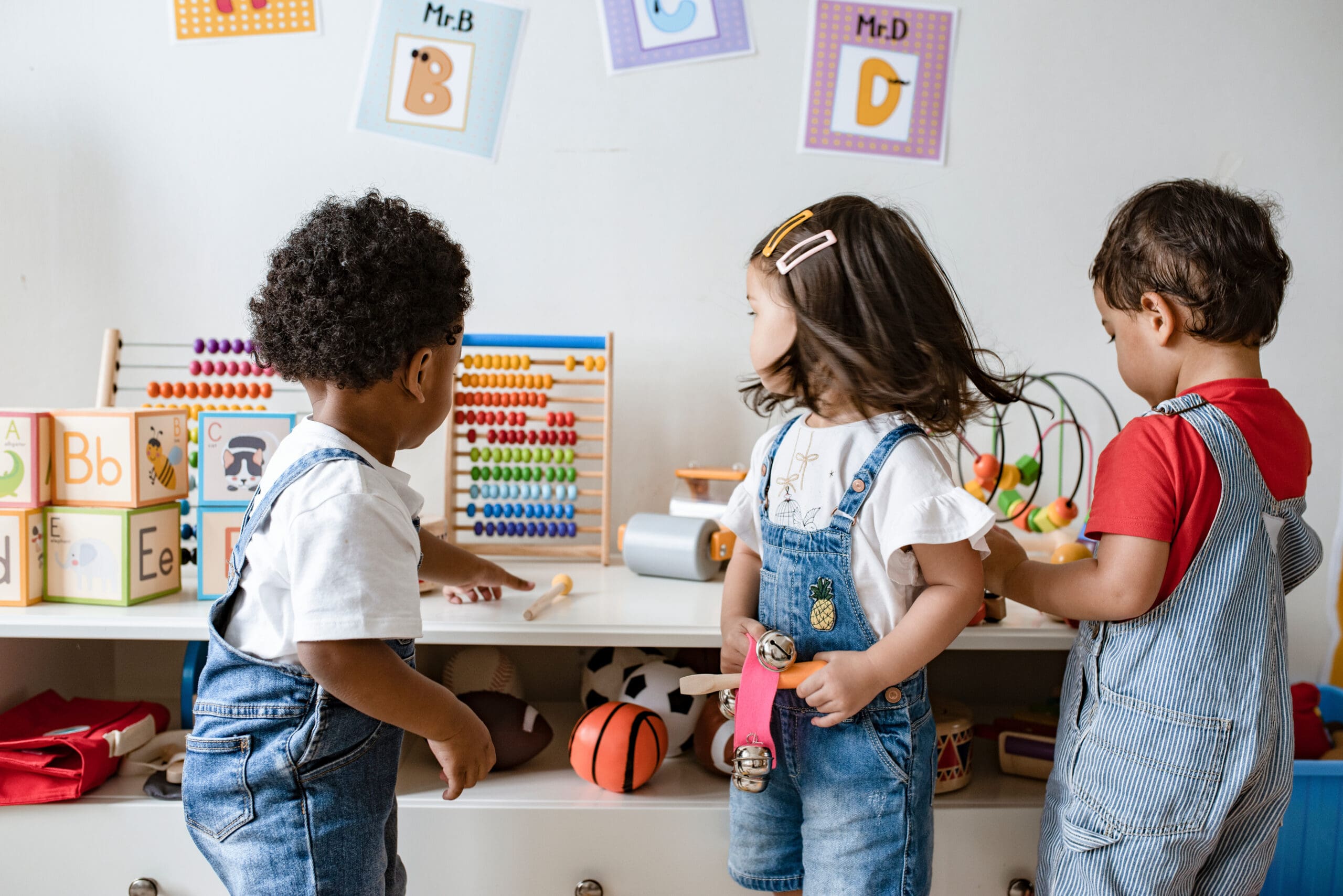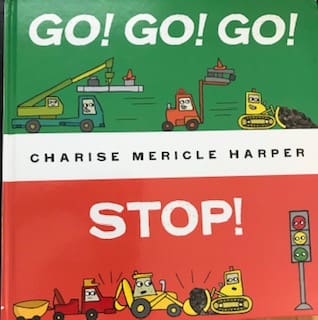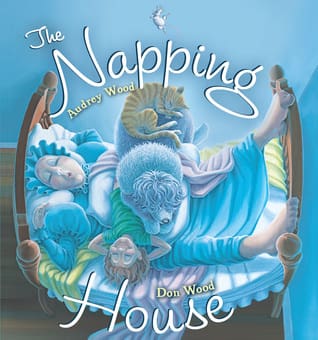You hear parents and other adults telling kids all the time, "Share your toys!" But do kids always have to share? And when can they do it without help from an adult and/or throwing a tantrum?
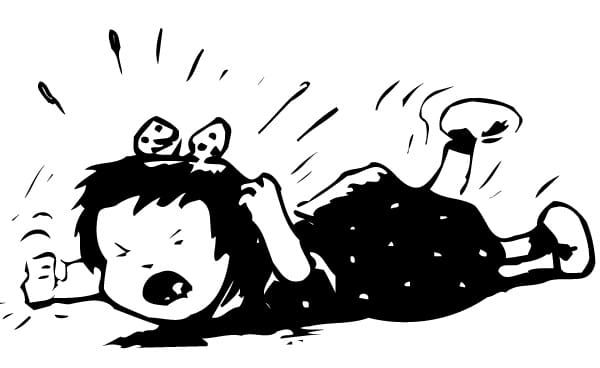
Well, it all depends. It depends on the situation, on the toy or activity your child is being asked to share, and on your child's developmental stage. And you also get to decide if there are times your child does or does not have to share (for example, at the playground with his own toys with children he doesn't know, or at home with a friend visiting).
Developmentally, children do not have the skills to share or take turns until age 3 or 4. They will not be able to take turns without adult intervention until around 5, and they will not be able to share, meaning play with one toy at the same time, until preschool or kindergarten.
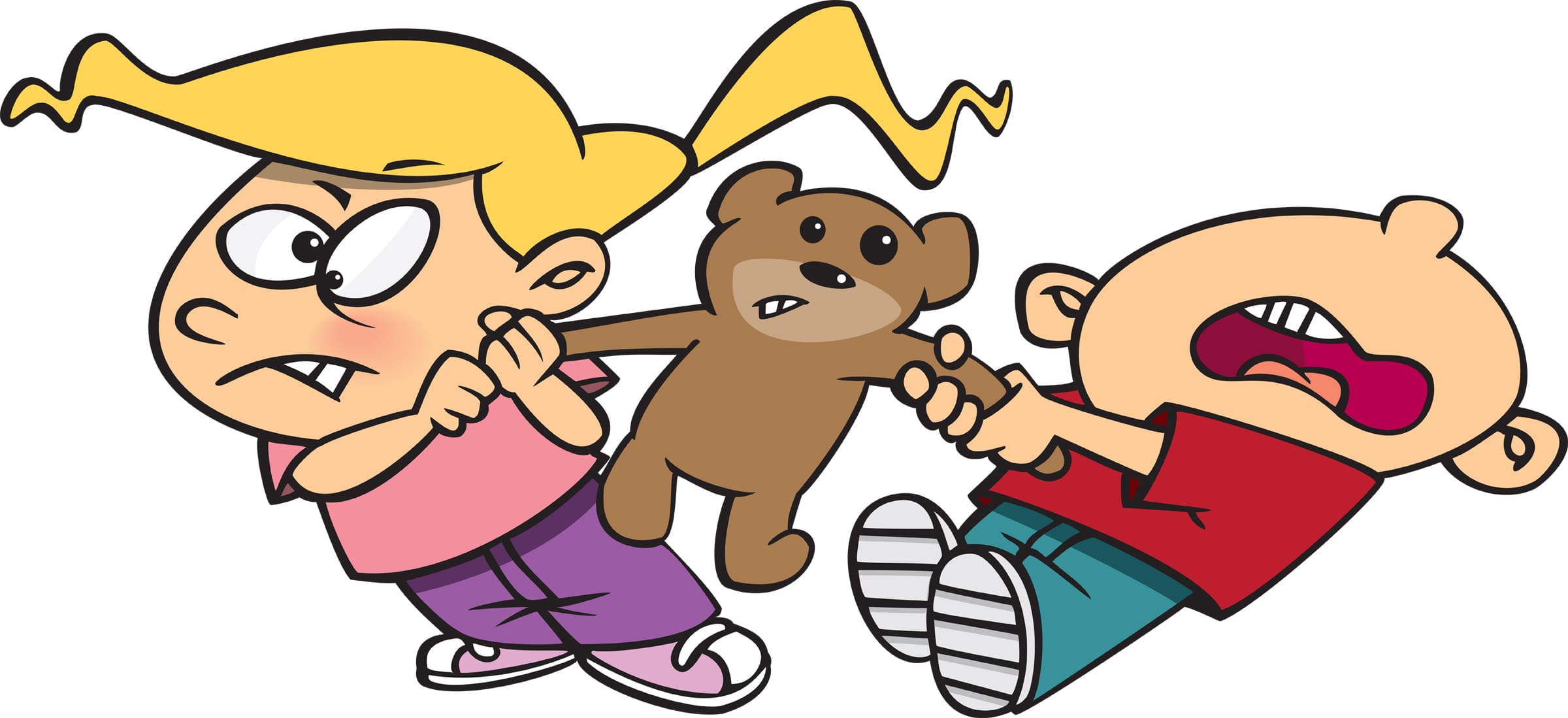
Babies and toddlers do not understand that other people have feelings, and they cannot take on another person’s perspective. So they can’t understand why they would give the awesome car they are holding to another child, or even why that child would be sad if they took the awesome car. It’s cool, I want it; therefore, I should (will) have it. This does not mean that younger children should be allowed to take any toy they want from anyone. As they grow and develop, we can teach them the skills of asking for a turn with a toy and waiting for their turn. The good news about young children is that at this early age, they are more easily distracted and can be redirected more easily.
What do you do when children take toys from one another?
If your child takes a toy from another child, take your cue from the “offended” child. If he is not upset that your child took the toy, let it go. (And in the reverse situation, when a child takes something from your child, let your child take the lead on whether to try to get it back or not.) There is no need to create a problem when the children don't see it as a problem. This does not mean either child will grow up to be selfish or a pushover; there will be plenty of times when someone starts screaming and they will get to practice turn-taking. If the other child is upset, you can say things like, “Bobby is sad because you took the toy. Let’s give it back to him, and you can have a turn later.” Then you can redirect or distract your child. You can also offer another, similar toy (this is why it can be problematic to have only one of anything in a group of children) to one child or the other.
As children get older, it is important that they learn to share. But this will take time, practice, and lots of patience on your part. It is really, really hard for children to share. So they will have lots of emotions as they learn to do this. Try to validate those emotions without giving in to the demands; “I hear you. You are so angry. You didn’t want to give Susie a turn. This is so hard.”
If the toy your child wants is a common toy (belonging to the school or playgroup), then he can ask for a turn from the child who is using it. Help your child practice saying, “Can I have a turn?” The child with the toy does NOT need to immediately give up the toy. She can say, “When I’m done” or “In a few minutes.” Often, when a child feels they have some control--once no one is forcing them to give up the toy--they will very quickly decide they're done and hand the toy to the waiting child. This gives them a great opportunity to share a toy genuinely, of their own accord, and not because an adult forced them to do it.
If your child brings a special toy to school, the playground, or playgroup from home, it is not necessarily appropriate to expect her to share it. If you brought your new diamond bracelet to work, would you want to let all your co-workers try it on? No way! But you may have to put the special home toy away, if it is upsetting other children not to be able to have a turn.
When helping children to understand other children’s emotions, it is helpful to use physical, concrete signs. “Look at his face. He is crying. He is sad. He doesn’t like it when you take toys from him.” Whenever your child can identify what s/he is feeling, that is wonderful! Identifying emotions is a first step in learning to manage them in yourself, and then learning to understand others’ feelings and therefore get along with them, which is the goal, right?
